
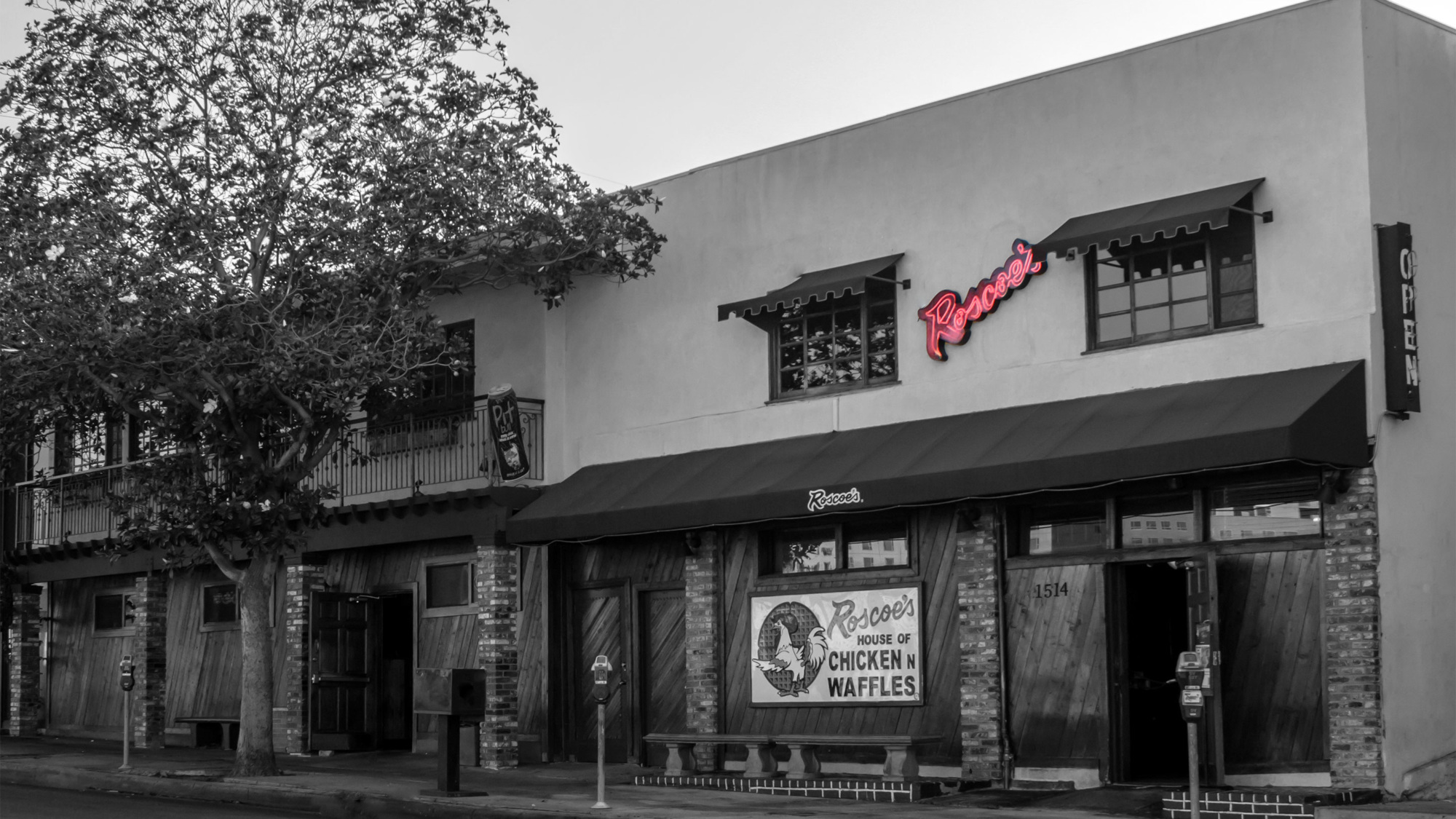
The Layered Legacy of Roscoe’s House of Chicken & Waffles
Once upon a time in Los Angeles, people thought the idea of combining fried chicken and a waffle as a meal was absolutely crazy. Herbert Hudson thought otherwise.
In 1975, he opened the first Roscoe’s House of Chicken and Waffles restaurant in Long Beach. In time, the Los Angeles Times declared that the restaurant had become “such an L.A. institution that people don’t even question the strange combo anymore.” Forty-five years later, Roscoe’s is living proof that a restaurant can have staying power by changing public opinion.
To speak of Roscoe’s, one must first acknowledge the restaurant where Hudson first ate the dish: Wells Famous Home of Chicken and Waffles in Harlem, New York. Harlem has long been accepted as the native habitat for fried chicken and waffles, thanks to its origin story. During the Harlem Renaissance era, the story goes, jazz patrons were getting out of clubs in the wee hours of the morning. They were hungry, but that time of night was too late to have dinner, but also too early to eat breakfast. Joseph T. Wells, a marketing-savvy entrepreneur, seized on the market opportunity and popular demand by creating a fried chicken and waffles as a dinner-breakfast hybrid. In 1938, he opened his eponymous restaurant and live music venue which locals called “Wells Supper Club” and “Wells.” Wells’ story is fantastic, but it’s not true.
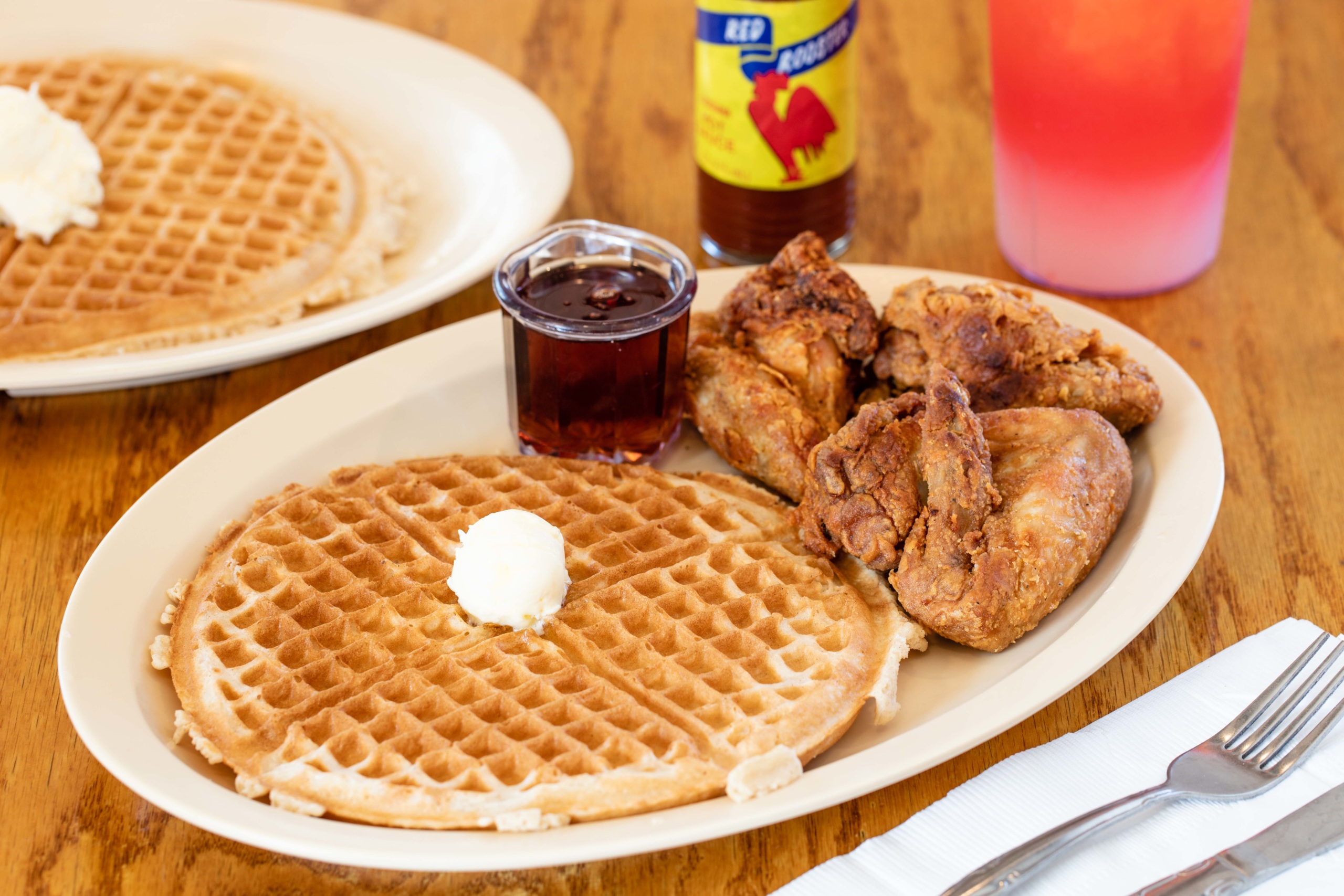
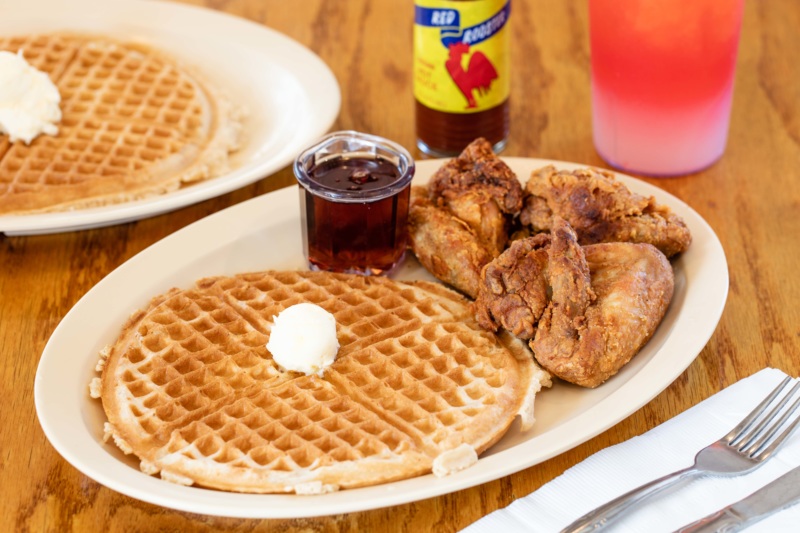
People in the U.S. have been eating fried chicken and waffles since the 1700s, and at least a century earlier in Europe. German immigrants brought a creamed chicken and waffle tradition with them and transplanted it in rural Pennsylvania. They earned the nickname “Pennsylvania Dutch” though they should have properly been called “Pennsylvania Deutsch.” By the 1790s, this rural dish got a cosmopolitan vibe when it became fashionable in Philadelphia restaurants. The dish made its way to the American South, and the creamed chicken was substituted with fried chicken.
By the early 1800s, notable southerners like Thomas Jefferson had fried chicken and waffles for breakfast when they entertained others, especially for a special occasion. Enslaved African Americans gained expertise making the dish because they were the principal cooks for wealthy southerners. For the next 100 years, southern elites gorged on fried chicken and waffles until the early 1900s when the dish became less fashionable. That decline in popularity created the cultural space for Wells to create and disseminate his enduring creation myth. Wells’ restaurant closed in 1982 when he became ill, and he died in 1987. His widow, Mrs. Ann Wells, tried to revive the restaurant in the 1990s, but after a short run, it closed permanently. That left Roscoe’s as the only notable restaurant showcasing fried chicken and waffles.
Understandably, Roscoe’s customers are drawn to the myriad ways that fried chicken and waffles can be paired and eaten. Should they be eaten separately with maple syrup and hot sauce applied in the appropriate places? Should one fold the waffle around the bone-in fried chicken and then dipped in maple syrup? Should it all be cut up, mixed together, and drowned in maple syrup? What of the sides? Should bacon, eggs, or sausage be added? Should one double-down on carbohydrates and add grits? These are weighty questions that must be answered through a personal experimentation. When President Barack Obama visited a Roscoe’s location in 2011, he ordered the “Number 9 — Country Boy” which consists of three fried chicken wings and the choice of French fries, potato salad, or a waffle. He chose the waffle. Afterwards, Roscoe’s renamed that particular menu item the “Obama’s Special.”


Roscoe’s isn’t a one-trick pony, and its menu entices customers with other soul food items. In 1996, the late and legendary Los Angeles Times food writer Jonathan Gold wrote “The hard-core dish at Roscoe’s, preferred by many of the customers who look as if they’d once spent a fair amount of time on the offensive line of the Cleveland Browns, is something called Stymie’s Choice, a daunting mountain of fried chicken livers sluiced in gravy, swamped in grits and garnished with a couple of eggs.” That option remains on the menu to this day. Gold also noted that others swear by the restaurant’s “hot water cornbread,” an underrated way to make cornbread by combining scalding hot water, cornmeal, and salt, forming a patty, and then frying the patty in shallow grease like one would do with a pancake. Hot water cornbread is also still on the menu, but it’s only available on certain days.
In addition to good food, Roscoe’s fame was fueled by its proximity to, and support from, famous people. A reporter for the Atlanta Voice newspaper playfully wrote in 1978, just a few years after Roscoe’s opened, “Roscoe’s Chicken and Waffle Emporium which is a west coast version of Nu Yawk’s famous Wells Chicken & Waffles, sure has a soulful radio spot going for them on KJLH/FM Radio Station. Just like Wells was in the good ole days in Nu Yawk, Roscoe’s is now becoming the gathering place for all entertainers, musicians, and celebrities to meet and eat after things and places close in Hollywood.” Comic great Redd Foxx and singer Natalie Cole were two such celebrities who praised Roscoe’s and encouraged others to visit the restaurant whenever they visited the City of Angels.
When Hudson, a foreman with General Motors, moved to California to open the restaurant, he knew that Angelenos would need some convincing. A 1978 advertisement in the Los Angeles Sentinel informed the newspaper’s African American readers that fried chicken and waffles was “An East Coast Specialty with a West Coast Atmosphere.” Like his inspiration, Wells, Hudson used his Motown connections to attract music industry folks to eat in his restaurants, provide live music, and even manage some locations. Hudson reinforced his local music vibe when he opened his second location in the spot formerly occupied by a popular music venue called Tommy Tucker’s Play Room. Hudson saw immediate success, and opened additional locations in an old coffee shop on Pico Boulevard, one in South Central L.A., and another one in Pasadena. Roscoe’s reach has expanded and contracted over the years with locations opening and closing, including a restaurant in the San Francisco Bay Area. Today, Roscoe’s boasts seven locations in the L.A. area.
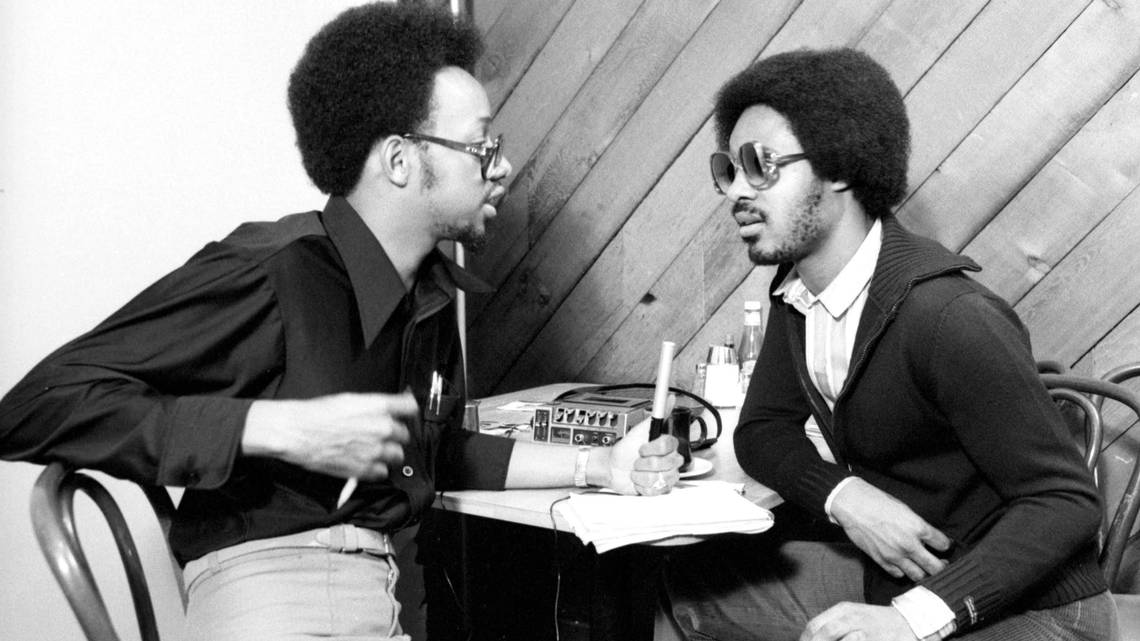
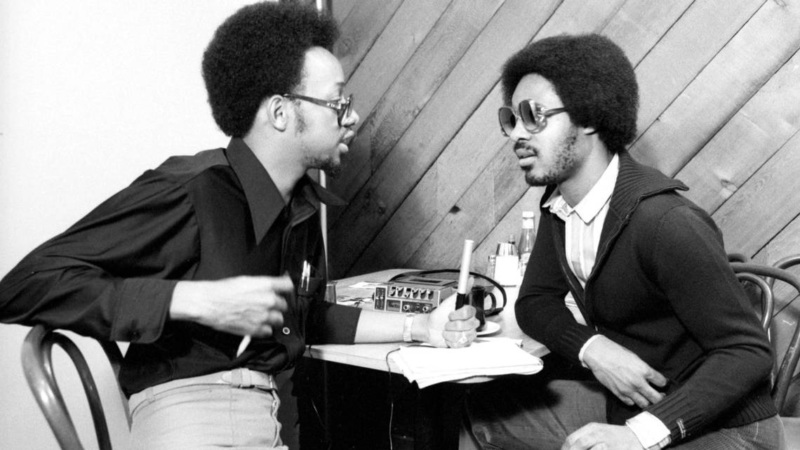
More than any other African American-owned restaurant, Roscoe’s has become part of popular culture, especially in motion pictures. The restaurant has gotten a mention in films including: Tapehead (1988), Swingers (1996), Jackie Brown (1997), Rush Hour (1998), Soul Plane (2004). In 2004, Roscoe’s got more than a mention on the big screen: It got its own eponymous feature-length film. “It’s the true story of how Roscoe’s Chicken and Waffles was created,” Cuba Gooding, Sr., told the Los Angeles Times in 2001. “I play one of the gangster types (named Fast Black) that I watched growing up, which is different from the drive-by-shooting, suicidal-drug-using, murderous-type kids they have today.” The film debuted in 2004, and it’s safe to say, it didn’t get the same amount of love from moviegoers as customers give the restaurant. In a strange circle of life moment in 2007, Cuba Gooding, Jr. aided someone shot outside of a Roscoe’s location while he waited for a carryout order.
Roscoe’s last decade has come with challenges. Hudson has been on both sides of business litigation, as a defendant and a plaintiff. The former because of a successful employment discrimination case brought by an African American employee at one of the restaurants. The $3.2 million judgment in favor of the employee caused Hudson to put the four Roscoe’s locations that he didn’t own into bankruptcy. As a plaintiff, Hudson sued someone in Chicago, Illinois who opened a “Rosscoe’s House of Chicken and Waffles,” adding an extra “s” to the name, a similar logo, and similar menu items. Chicagoans flocked to the restaurant believing it to be an outpost of the L.A. restaurant. They settled out of court a day after Hudson filed a trademark infringement lawsuit.
Despite these recent troubles, Roscoe’s soldiers on. A new location is in the works for West L.A., and the company talks of even more expansion. Though Roscoe’s didn’t not start fried chicken and waffles as a restaurant craze, it certainly inspired many other entrepreneurs. Fried chicken and waffles were once considered a novel addition to the dining scenes of many cities. Now, it seems weird for restaurant menus to go without it. That’s a legacy worth celebrating.
Roscoe’s House of Chicken & Waffles: Various locations, including 1514 N Gower St., Hollywood. www.roscoeschickenandwaffles.com
Adrian Miller is a James Beard Award-winning author who has written about African American presidential chefs, barbecue, and soul food. He lives in Denver, Colorado.
Sources:
- Horn, Jonathan and Mark Saunders, “Roscoe’s Chicken and Waffles could finally make San Diego debut by the end of the year,” CNN Wire Service, April 17, 2019.
- Gold, Jonathan, “Waffle Mixer,” Los Angeles Times, May 9, 1996, p. Hi14.
- King, Susan, “Weekend Chat,” Los Angeles Times, Feb. 2, 2001, p. 38.
- Los Angeles Sentinel, May 26, 1977, p. B2A.
- Pang, Kevin, Chicago owner agrees to change restaurant’s name, McClatchy – Tribune Business News, April 9, 2008.
- Roscoe’s House of Chicken n Waffles, imdb.com.
- Stech, Katy, “Judge Ousts Roscoe’s House of Chicken and Waffles President,” Wall Street Journal, Sept. 26, 2016.
- The Atlanta Voice, June 10, 1978, p. 19.
- “Well’s Restaurant in Harlem, The Best Chicken and Waffles in the World 1938-1982,” Harlem World Magazine, Aug. 10, 2020.
- White, Renee Minus, “‘Chicken & Waffles’ and Wells’ fine restaurant are back,” New York Amsterdam News, Dec. 19, 1992, p. 29.
- Widdicombe, Ben, “Cuba Plays the Hero for Real,” New York Daily News, June 6, 2007, p. 22.















